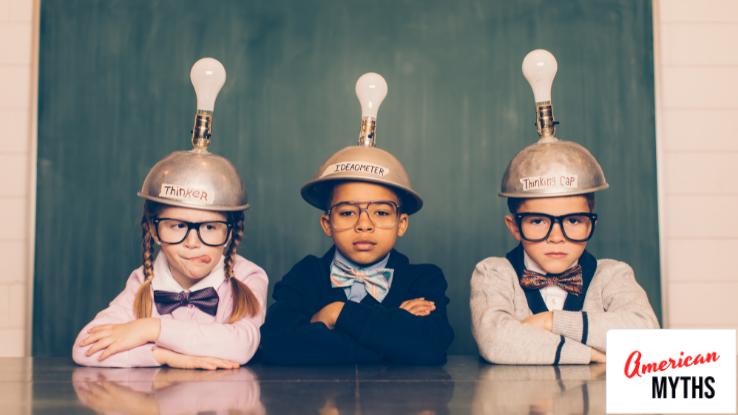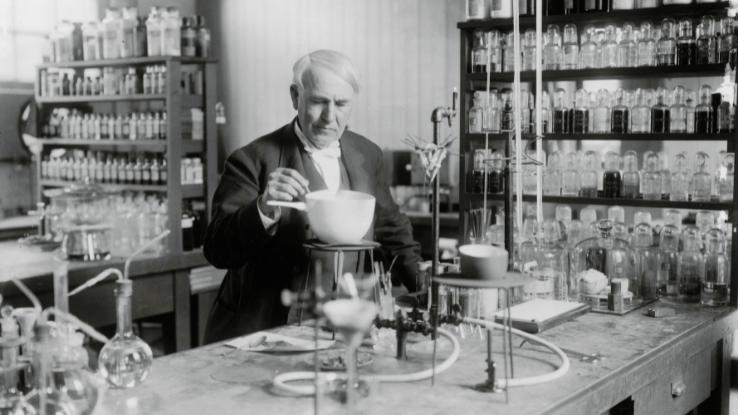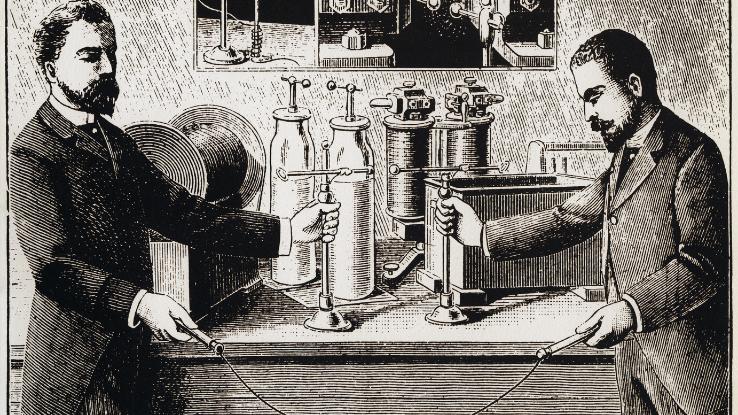Did Thomas Edison Really Invent the Lightbulb?

Imagine doing your homework late at night and not being able to see the paper you’re writing on. Or reading while sitting as close as you can to a lit candle. You definitely couldn’t do much of the cleaning or organizing you didn’t get done while you were at school or work that day. How did anyone get anything done back in a time when we didn’t have lightbulbs?
It’s safe to say that lightbulbs are one of those inventions that society cannot live without. Well, we could if we had to — but with drastic changes, considering that it gets dark at 5 p.m. or earlier in most states for half the year. Nowadays, we have longer-lasting lightbulbs that burn less electricity than they used to. So much of our technology is backlit as well, like phones, TVs and gaming systems. Where did all of this light come from?
Thomas Edison is the person whom historians often credit with devising this invention, along with many other innovations. Other historians say that Edison didn’t invent the lightbulb, but helped transform the original into the lightbulbs we know today. But, did Edison even do that much with lightbulbs?
Who Was Thomas Edison?

Thomas Edison was born in 1837 and passed away in 1941. As a major mind of his time, Edison collaborated with other iconic inventors and innovators such as Henry Ford, Kunihiko Iwadare, Harvey S. Firestone and Miller Reese Hutchison. Thanks to his achievements and historical notoriety, popular culture loves portraying and referencing Thomas Edison; The Simpsons even centered him in the plot of the second episode of its tenth season.
Edison sold his first invention at the age of 22 for $40,000 — a lot of money in 19th century standards — and quit his job to invent full time. His first invention was an improvement to the electric voting machine in 1869. Edison’s success led to some sweet digs. In 1876, Edison established the United States’ first industrial research facility in Menlo Park, New Jersey.
The Library of Congress accredits over 1,000 patents to Edison’s name. It also accredits major milestones like his involvement in the development of the telegraph, improvement of the phonograph (record player), as well as his contributions to motion pictures and film. His role in the fruition of the lightbulb was glossed over in the Library’s entry of Edison. Could it be because he didn’t play that big of a part?
Who Really Invented the Lightbulb?

To get to the lightbulb’s true origin, we’ll have to look at the turn of the century — the 19th century, when British scientist Humphrey Davy helped create the first known arc lamp. An arc lamp earned its name because it used an electric arc to create light. This was the first incandescent light known to humankind.
Enter Joseph Swan, who in the mid-1800s helped improve the lightbulb and even worked with Edison himself at various points in his career. Early lightbulbs often burnt out quickly and often caught on fire — imagine having to worry about your bulbs catching on fire anytime you turned on a light! Thanks to Swan, who created a bulb that utilized oxygen instead of carbon, we don’t have to worry about this issue. His bulb did require a lot of copper to create and sustain, however, so ultimately he wasn’t the inventor to make lightbulbs the norm in homes around the world.
Now enter the yin to Edison’s yang, the often unsung inventor, Nikola Tesla. You probably know the name Tesla now because of the car company run by Elon Musk and other establishments named after the inventor, but the Tesla name still hasn’t quite achieved the same level of ubiquity as Edison.
As more and more inventors used their science backgrounds to inform the process of creating more lightbulbs, the logistics of getting the bulbs into homes came into question. Remember, homes didn’t have outlets in every wall back then. So what was the solution to this issue? Believe it or not, the name of a famous rock band, AC/DC, comes into play.
Nikola Tesla spent six months working for Thomas Edison before leaving. According to Tesla, many of his bonuses were not paid out. This was before workers started rallying for their rights, so it’s plausible Edison did this. The two inventors feuded over whether an alternating current (AC) or direct current (DC) would be the best way to bring lightbulbs into American homes, with Tesla favoring AC and Edison preferring DC.
This resulted in Edison starting a smear campaign against Tesla in the hopes that investors wouldn’t want to work with him. Edison succeeded in tarnishing Tesla’s name, but ultimately AC current won out. The first hydroelectric power source was made in Niagara Falls thanks to Tesla’s innovations. Tesla also invented the Tesla coil, which helped power X-ray machines and allowed humans to transmit electricity wirelessly, allowing radio and telegraphs to develop further.
Justice for Tesla? The Legacy of Lightbulbs Today

As we see it, Thomas Edison knew back then what a lot of us know today: Reputation is everything. As the head of the first industrial research facility in the nation, Edison became known as “the wizard of Menlo Park.” Beloved throughout modern history, only recently has his legacy come into question. Because he was in charge of and worked with so many different innovators, some historians hesitate to credit Edison alone with inventing the lightbulb. You can test your knowledge about Thomas Edison, here.
Despite accusations of not being what he’s made out to be, Americans continue to benefit from Edison’s mind every day. Perhaps, instead of the “scientist” and “inventor,” we could start looking at Thomas Edison as more of a “Creative Director” or even a CEO. This would put Edison more in line with people like Mark Zuckerberg, Steve Jobs or Elon Musk. He had ideas, but with such a big staff, it’s hard to know who was really doing the innovating in the end — and how often Edison might have taken credit for their ideas.
Today, lightbulbs use light-emitting diodes (LED) to illuminate our homes. The first LED light was created in the 1960s; the LED bulbs we use today weren’t really possible until the turn of the 20th century.
Bottom Line: Edison Did Not Invent The Lightbulb
Did Thomas Edison invent the lightbulb? Certainly not. Did he improve it? He helped. Edison definitely had a seat at the table, but his contribution was more like a few statements in a long conversation. The credit, all in all, should go to Edison’s staff and unsung scientific heroes like Day, Swan and Tesla. Thomas Edison had a beautiful mind and contributed a lot to science and technology. Because of that, he sometimes receives credit for accomplishments that weren’t his.





